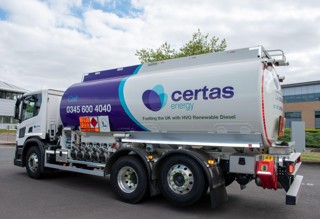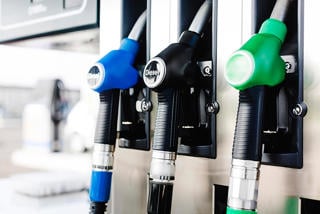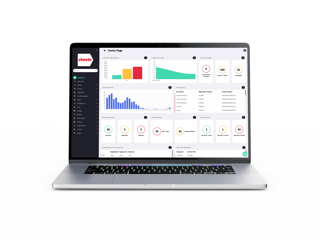Eighty-five per cent of fleets say their average CO2 emissions are 160g/km or below, with a quarter dipping under 131g/km.
The findings, in an exclusive Fleet News survey, reveal the level of focus companies are putting on their environmental credentials and how the vehicle fleet is seen as a core component of their green aspirations.
The policy is being increasingly driven from the top. A year ago, just 30% of fleets reported that senior management were leading by example on the green agenda; this year that has risen to a staggering 61.5%.
Cost is the over-riding factor, with 60% of companies saying this was their main motivation for adopting an environmental policy.
Just over one in five (21%) said improving company image was their main consideration.
In the 2009 Fleet News Green survey, 72% of respondents said displaying green credentials was increasingly important when tendering for business. However, just 2% of survey respondents this year said winning
business was the main factor in their decision to embrace environmental policies.
Nine fleets ticked ‘other’. Of these, three fleets – all in the public sector – said their motive was to hit Government targets, while one told us that reducing P11D costs for drivers was a key aim.
‘Think green, think carbon dioxide emissions’ was the overwhelming mes-sage from fleets. Two-thirds have implemented a CO2 cap, up from 63% last year.
The vast majority (88%) have selected a ceiling of 160g/km or below, bringing them under the 20% capital allowance write-down threshold.
However, while last year 65% opted for 160g/km, this year just 45% have gone for the capital allowance limit.
Many more fleets have reduced their CO2 cap further – just over a third have plumped for 140g/km or less. The lowest cap is 100g/km, set by one fleet for small cars (its large-car cap is 140g/km).
Nine per cent of fleets have opted for a 120g/km limit, similar to last year.
One was in the public sector; the others were wholesale/retail companies. Four fleets have more generous caps – one has gone as high as 200g/km.
However, all these fleets with high caps have average CO2 emissions of 160g/km or below.
In the case of the 200g/km capper, average fleet emissions are just 142g/km. Two others cap at 180g/km with average emissions of 137g/km and 130g/km.
It suggests that to bring average emissions down below 160g/km, a cap is not necessary. Benefit-in-kind
taxation based on CO2 emissions is effectively driving many employees into more efficient cars.
However, to achieve the lowest average emissions, caps do have a key role to play, particularly if they are reduced year-on-year (56% of fleets say they intend to reduce their cap over the next 12 months).
And with a growing number of models available with ultra-low emissions of below 110g/km (allowing 100% write-down in year one), including the BMW 320d Efficient Dynamics, staff have plenty of options to consider.
But while the company spotlight is firmly on CO2 emissions, other particulate emissions remain in the dark for many fleets.
Diesel engines produce around seven times the level of NOx (nitrogen oxides) compared to petrol and only diesels produce particulates. Both affect air quality, which causes respiratory diseases.
Volvo and Honda have been outspoken about the subject, with the former proposing an emissions think tank and launch of a NOx label to display in showrooms alongside the CO2 label (Fleet News July 22).
But while two-thirds of fleets say they are aware of NOx emissions, only 22% have taken any action to tackle
the issue.
The topic will become more prominent with the imminent introduction of Euro5 legislation in January for all car and van production (every all-new model has been subject to Euro5 since September last year).
It puts much greater emphasis on NOx emissions and demands investment by manufacturers whose diesel engines fall below the mini-mum requirements.
Honda has already conceded defeat for its current generation Civic, admitting that it cannot justify the cost of developing a Euro5-compliant engine when the all-new model is due for launch at the start of 2012.
It creates a diesel-free vacuum for 2011.
Vehicle choice is a key tactic for fleets looking to reduce their impact on the environment.
Almost nine out of 10 fleets have taken this approach, significantly higher than any other approach.
And a further 44% say vehicle choice will continue to be a key area they will focus on to reduce CO2 emissions.
Alternative fuels, the second most popular action taken by one in five fleets, becomes of lesser importance for future action, when it falls behind driver training.
While 14% of fleets have already exploited training to improve driver efficiency, almost one in three say this action will form the cornerstone of their future green policy.
Also worth noting are the use of video and phone conferencing, already adopted by 12% of fleets, journey planning (14%) and reducing fleet size, an action taken by 10% of fleets.
While operating fewer vehicles will undoubtedly reduce CO2 emissions, fleet reduction is more likely ex-
plained by the need to cut costs or is down to smaller workforces due to redundancies or unemployment during the recession.
The worst of the cutbacks may now be over, however, with just 6% of fleets saying reducing fleet size will be a priority over the coming months.
53 fleets took part in the Fleet News Green survey: 29 operated fewer than 250 vehicles, 18 between 251 and 1,000 and six more than 1,000 vehicles.
Thirty were fleet managers/controllers, 12 directors, nine administrators and two ‘other managers’.
Have your say on the survey results at fleetnews.co.uk/forum
Grey fleet emissions
The proportion of fleets that track the CO2 emissions of employees who drive their own cars for business – the grey fleet – has risen slightly year-on-year, from 19% to 23.5%.
The low figure is likely to be down to fuel receipts going straight to finance, bypassing the fleet manager.
However, without the fleet manager’s involvement, grey fleet costs could spiral.
Consequently, fewer than a third of fleets have taken action to cut CO2 emissions.
Those actions include capping CO2 emissions, reducing fuel payments, restricting mileage and mandating age limits and engine sizes.























Login to comment
Comments
No comments have been made yet.